Anyone who knows me will tell you that I tend to purchase expensive gear. It’s not because I want to appear fancy or anything, but rather because of the countless hard lessons I learned with cheap gear in my early days of camping. Ever had a pot of hot coffee and grounds fall on your lap after the handle broke? I have! But over the years, I’ve learned that sometimes the affordable gear can be as good, if not better than the expensive stuff, and there are few better examples of that than GSI.
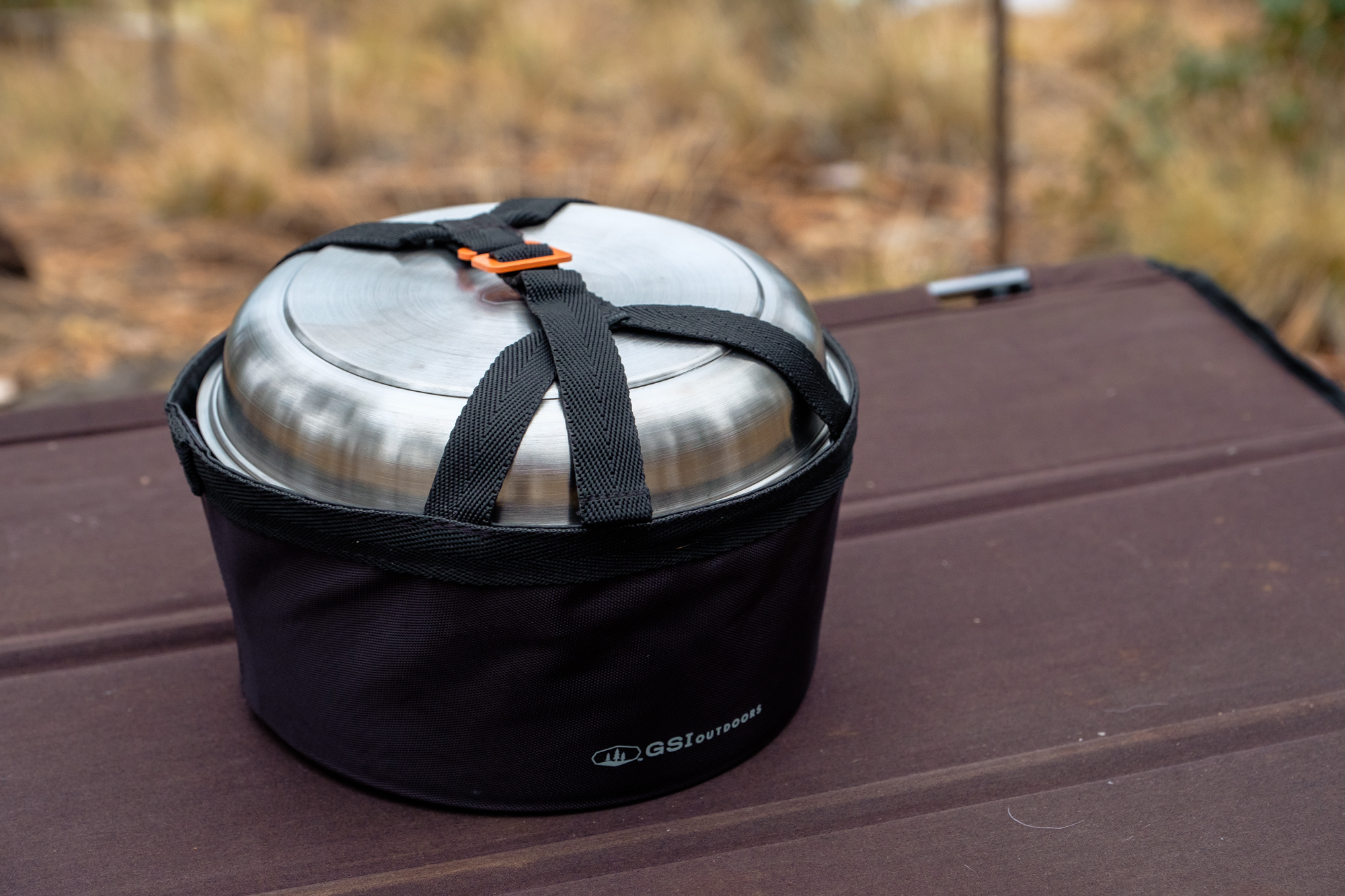
Now most of us are probably quite familiar with GSI’s products by now and know that their non-stick pots and pans are easy to cook with and clean up in a breeze, but stainless in an entirely different animal. They’re easier to burn food on, more difficult to clean up, and can be damaged quickly if you take your eye off of them for even a moment too long, so I had a mix of concern and excitement when this brand-new Glacier set appeared on my doorstep. Would this hold up to my expectations for the brand? I had to know, so I grabbed a knife and began to tear open the packaging.
First Impressions
Upon opening the box, I could see it contained many of the same components found in their Bugaboo and Pinnacle sets; four 14-fluid-ounce mugs with insulated sleeves, four 14-fluid-ounce bowls, four 7.5-inch plates, four Sip-It Tops, a folding pot gripper, and a welded sink. The big differentiating factors though were the stainless steel cooking components, consisting of one three-liter pot, one two-liter pot, a single strainer lid, and a 9-inch frying pan, all nested neatly together in the typical GSI fashion. This keeps your kitchen kit compact, organized, and in most scenarios rattle free, which is a huge plus when spending hours on dirt roads. Now, I make a point to note that in the Glacier Kit you’ll only find a single strainer lid, because their other sets include two, one for each pot. For some reason, in this set, they decided one universal lid would be enough, but we weren’t so sure. More on that below.

Field Use
To accurately test the Glacier set, we decided cooking inside simply wouldn’t do. It was necessary to simulate all of the normal camp conditions, so we threw our gear into the Excursion and headed for the mountains. This would allow us to use the product in low-temperature conditions, hear any rattles that would occur on dirt roads, and most importantly, ditch the office capture quality photos. After a good hour on the trail, I was satisfied that the Glacier set wouldn’t rattle excessively on washboards or rocks, so we pulled off the trail and started cooking.

Our meal would be a simple pesto pasta dish, with plenty of seasoning, veggies, and noodles to get stuck to the pots and pans if we weren’t careful. Since it was cold, around 35°F with snow flurries, we would make some coffee as well.
The first thing I noticed when I went to make the coffee was the handy labels inside the pots. I’m usually more of an eyeball it sort of cook, but for those who like a degree of accuracy, it’s nice to have built-in measurements.

The next thing I noticed was how much I missed having two lids. While I love the dual-size functionality of the single stainless steel lid and strainer combo, only having one for two pots extends cooking times, and also opens up the second pot to bugs and debris. Not a huge deal on a snowy day in January, but come summertime I don’t want to think about what could fly into the open one.


As the water boiled, we grabbed the familiar collapsible GSI handle and connected it to the pot. I’ve always been impressed by how easy these handles are to use, especially when maneuvering the pots and pans around the kitchen space. Many camp pots feel flimsy and unpredictable under these conditions, making tasks like pouring hot water somewhat precarious, but the GSI handle is stout and makes aiming the water into the Aeropress look like a walk in the park.
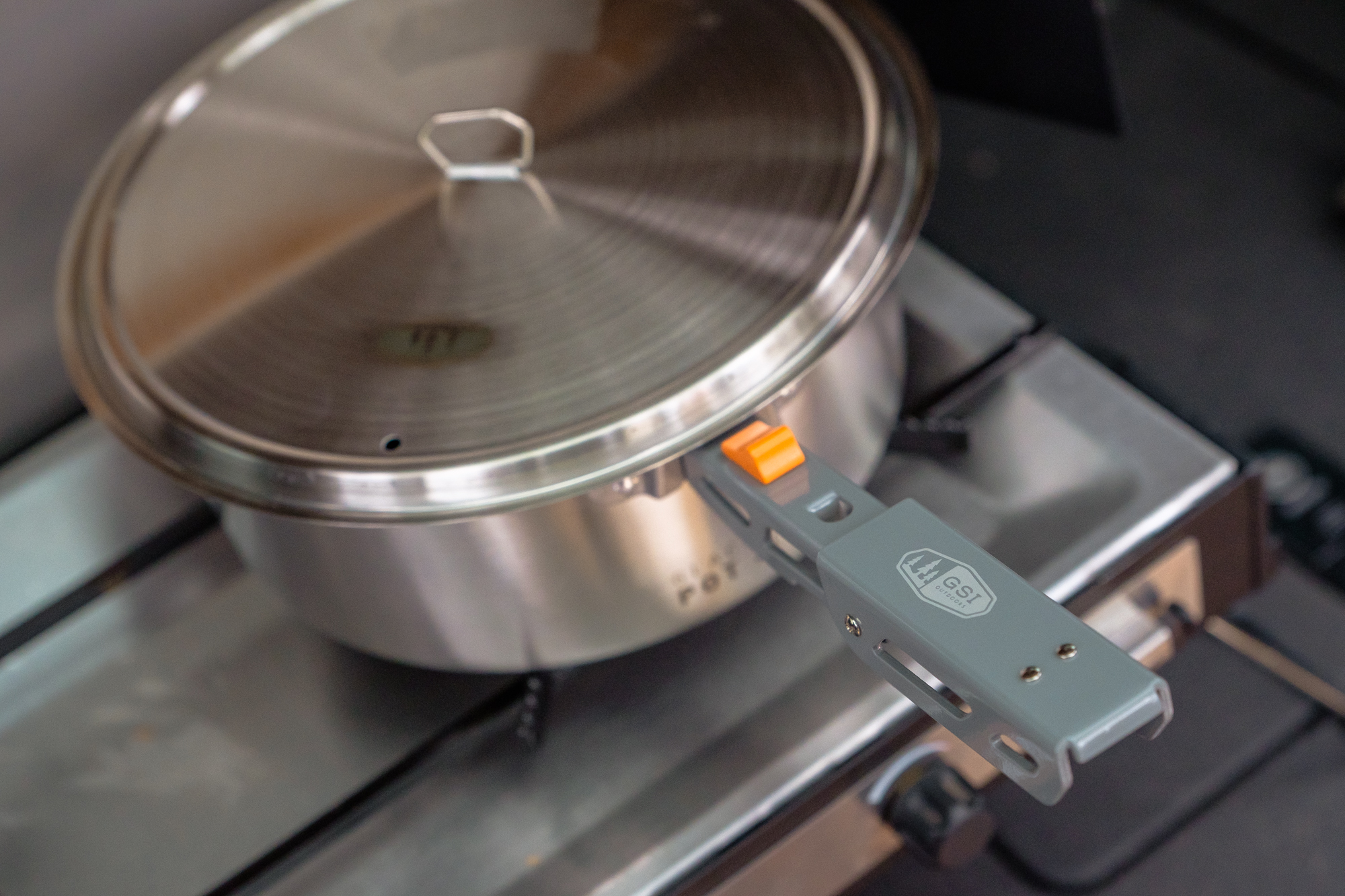

Once the coffee was ready, we poured it into the insulated cups which nest neatly inside the pots and bowls. As these are the same mugs used in all of the other GSI cook sets, I already knew how they would perform, but it didn’t stop me from appreciating the simplicity and effectiveness of their insulated sleeves and double-sided Sip-It Tops.
The real test for this kit was evaluating the stainless pots and pans, so as the pasta dish started coming together, I decided to crank the heat up a bit and see how the large pot handled a bit of burning. As expected, things began to char to the surface quickly, but we were surprised to find that merely rubbing it lightly with the spatula cleaned it right off. It’s certainly not as good as their non-stick products, but for stainless steel, the Glacier was quite forgiving, which is good news for clumsy chefs like myself.
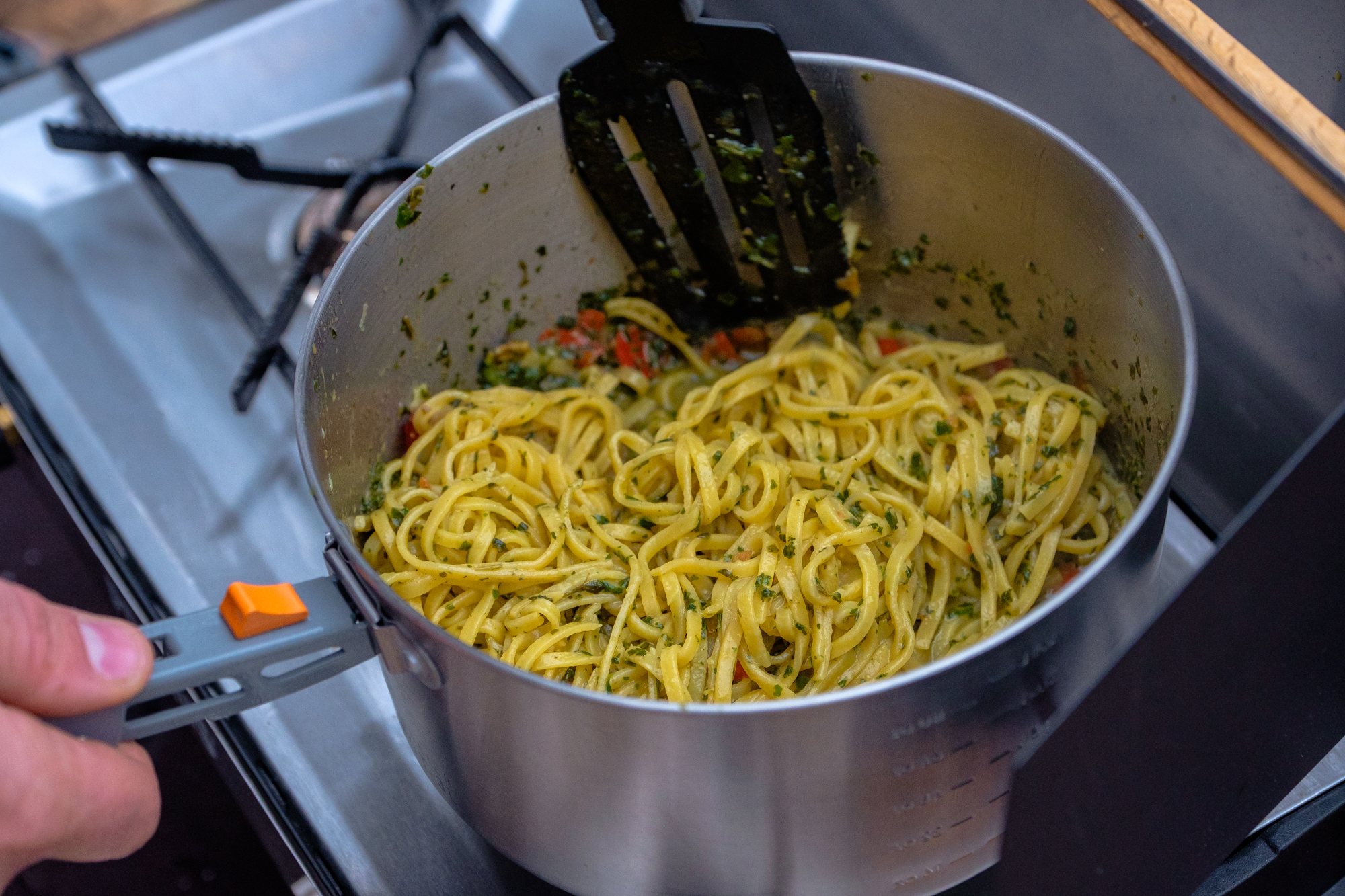
Of course, there are some benefits to stainless that the Pinnacle and Bugaboo sets can’t boast. For example, you can leave the stove behind entirely and throw the stainless pots over a campfire without worry of damage, or toss it on a bed of coals for that perfect fire-roasted meal. The Glacier pots are also more durable, and won’t chip or scratch like the non-stick pans. Plus, and I hate to say this, but stainless pots and pans look fantastic, which is a benefit for those of you who actually care about staging trendy Instagram photos. You know who you are.
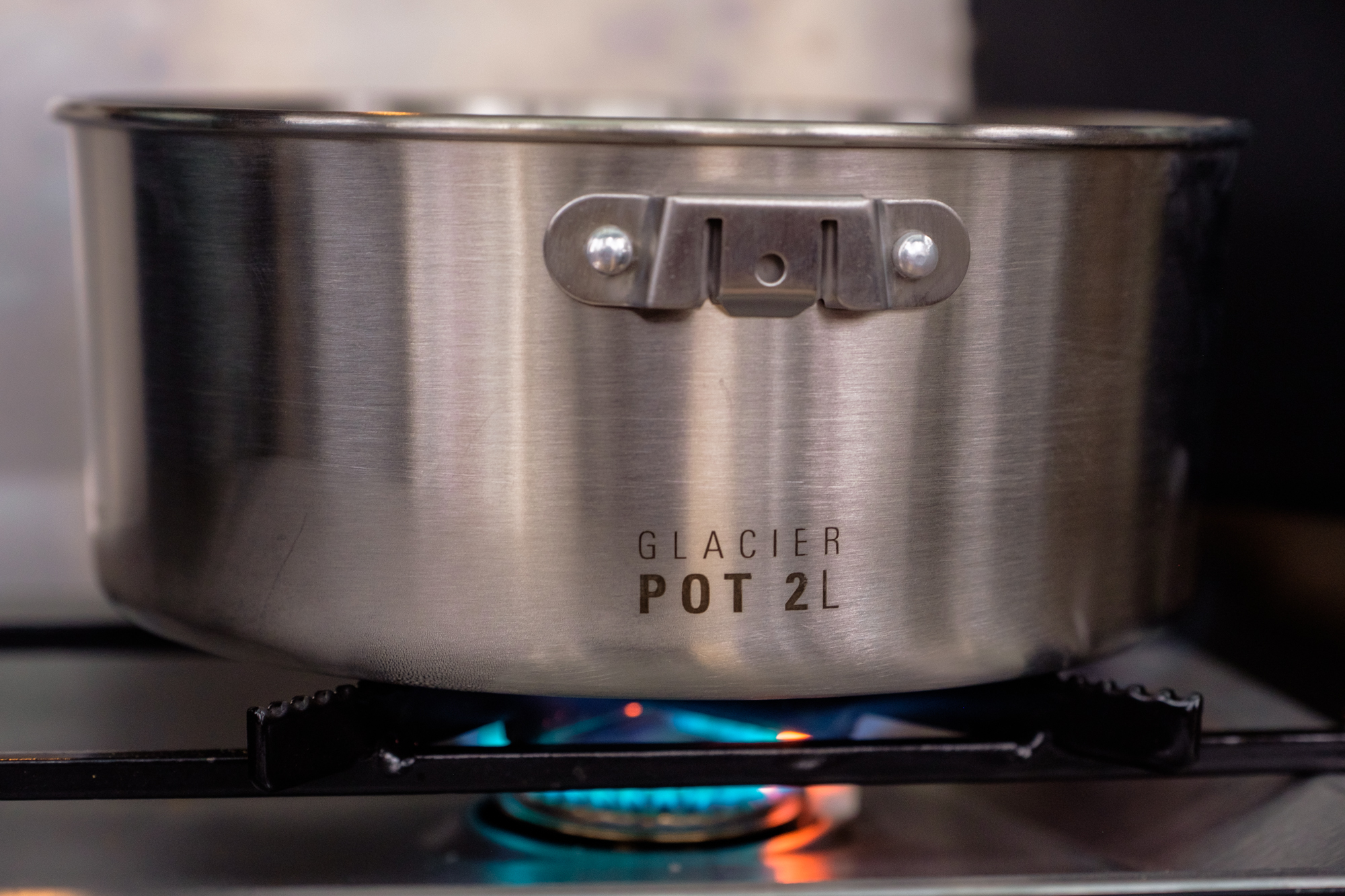
By the time the pasta was done, we were loving this new Glacier pot set. It cooked everything quickly and evenly without discoloring, and I was happy to see that even the spot where I purposefully let the noodles burn looked good as new. We attached the handles and scooped the noodles out into the “bowls” which were the only other downside to this cook set. They’re too tall and narrow, making them difficult to scoop food into or use like a normal bowl. Sure, they nest perfectly with the cups, and their shape makes sense for that purpose, but it seems somewhat disingenuous to call something identically shaped to their cups a bowl simply because they lack an insulating layer.
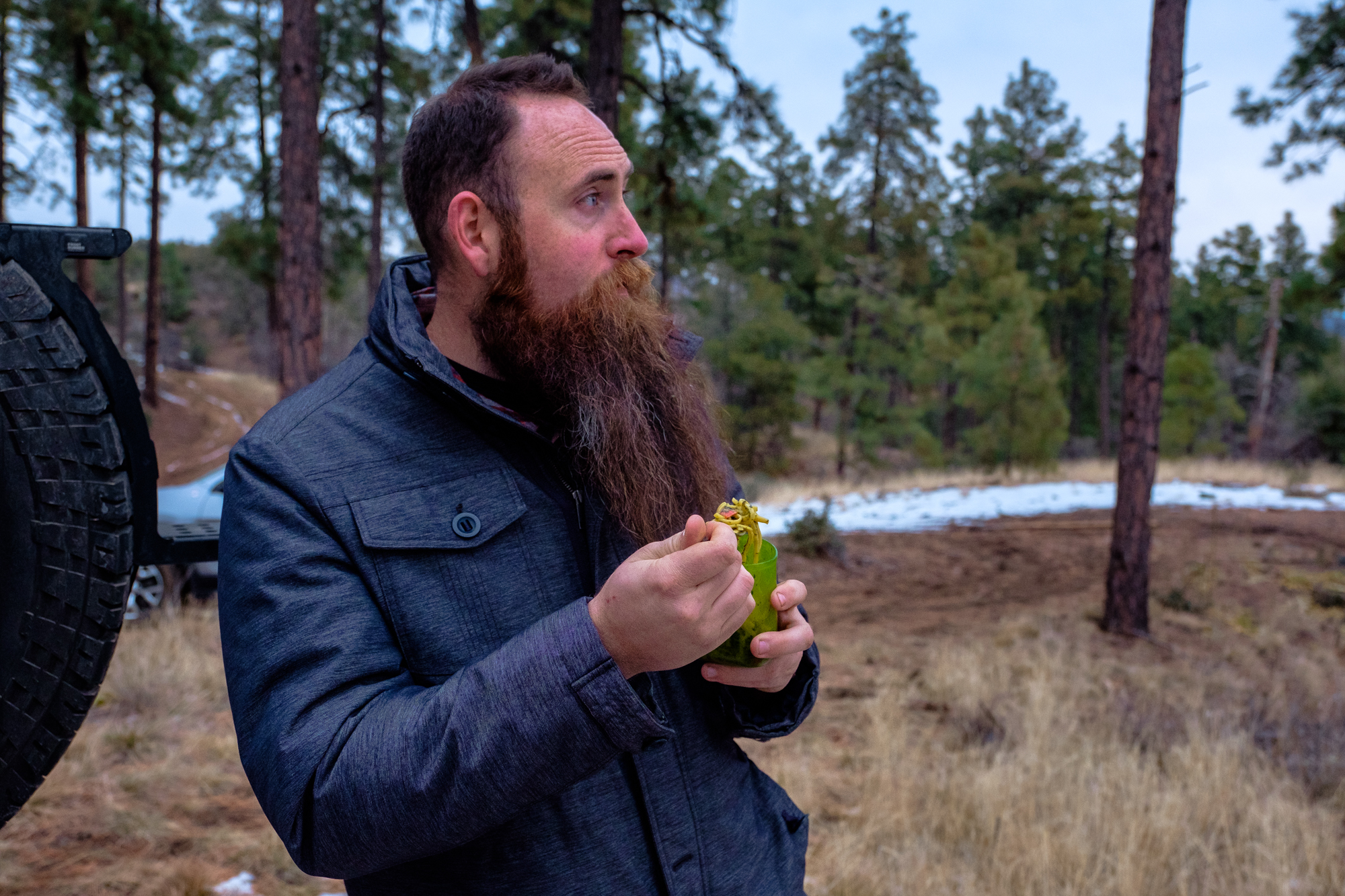
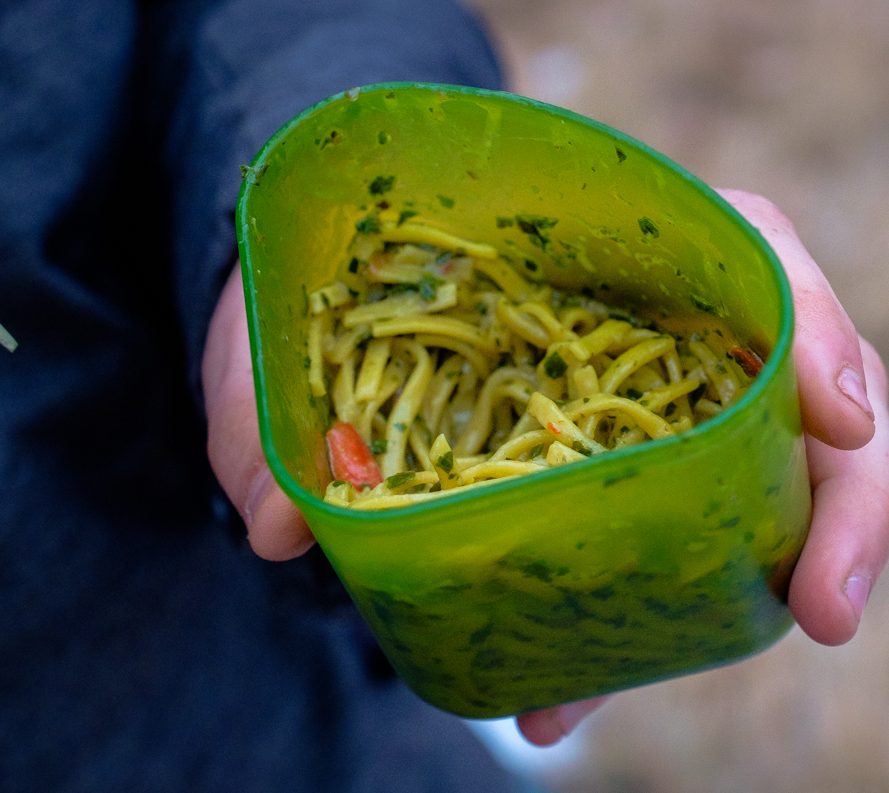
Still, they served their purpose, and after eating the noodles we didn’t spill during the serving process, we only had one test left. The one I was dreading most: cleanup. I threw some water in the bowl and heated it to let things break up a bit, then wiped the pot with a rag. To my great satisfaction, it came out smudge-free without any scrubbing—an easy cleanup in true GSI fashion.
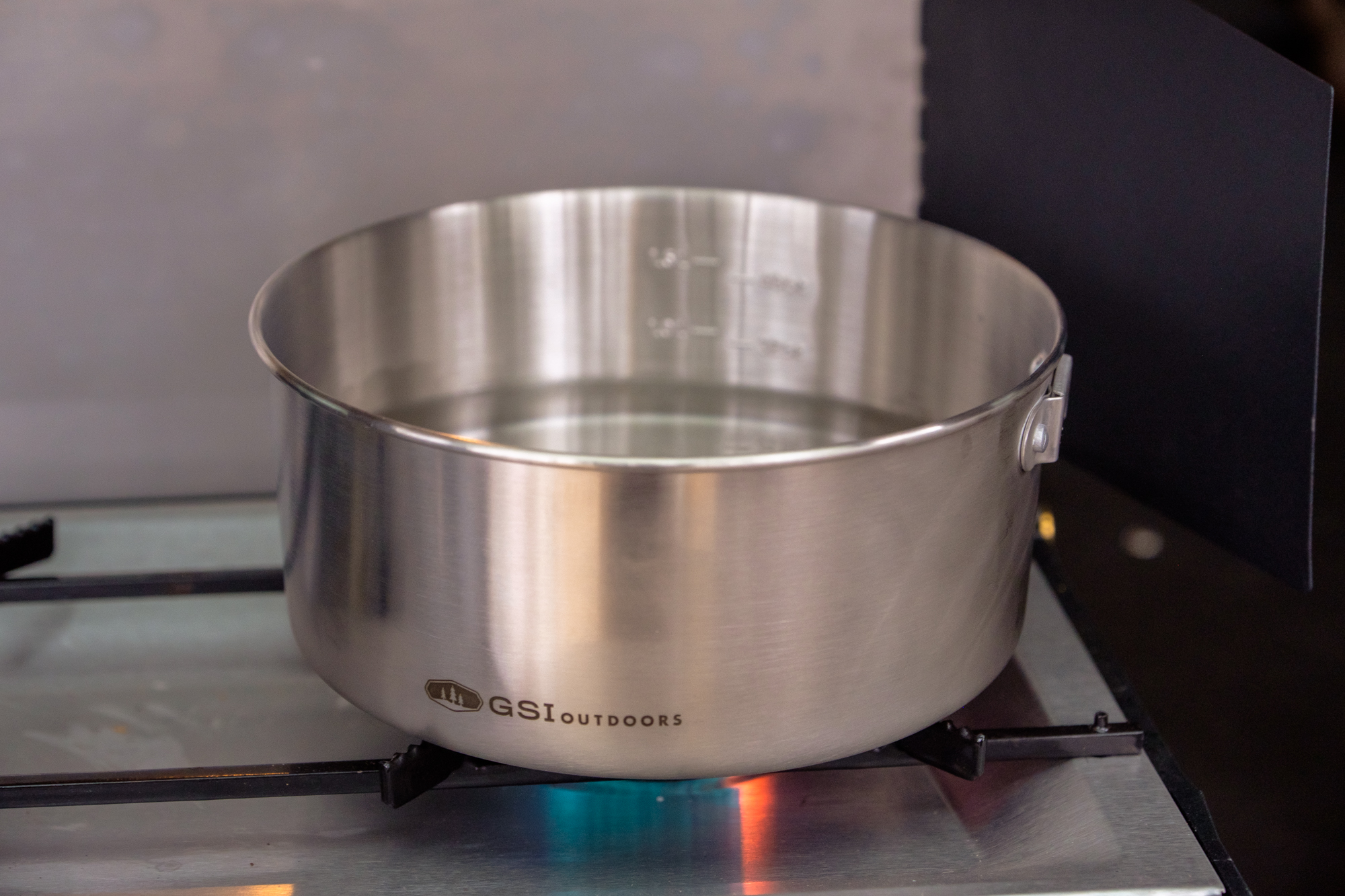
Overall I really like the Glacier cook set. At $90, it’s one of the more affordable sets designed for four people and embraces all of the nesting features we love with other GSI kits. The lack of two lids is a little disappointing, and the bowls are still underwhelming, but I would gladly accept both drawbacks for the wealth of positives found in this kit. To learn more about the GSI Glacier, or purchase your own, visit their website here.
Pros
- Durable enough for cooking over campfires and coals
- Won’t chip or crack like non-stick
- Very compact four-person set
- Wash bowl included
- Cleans easily for stainless
- Affordable
Cons
- Only includes one lid for pots
- Bowls are more like cups




